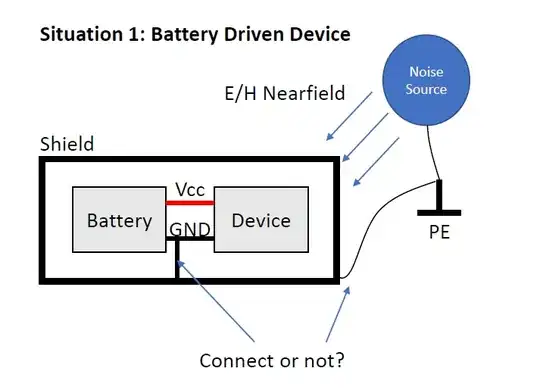For me shielding is always a difficult question. I'm sometimes really unsure how I should connect the shield. What I know is that the shield should be connected with very low impedance, that for sure, but when does make it sense to connect it to the system GND and when to protective earth?
Let's have a look at two examples:
In this situation, the device is battery driven and is floating with respect to the noise source. I think, when the battery and the device are connected together with low impedance GND, there should really not be any problems, also when there is no shield at all. When a shield is added, I think I would connect it to the GND and NOT to PE also (since no reference,) but I'm not sure if the GND connection to the shield is really necessary, since if this is a Faraday cage, any field penetrating the shield will produce a counter field, that should practically attenuate the fields inside the shield.
This situation I have encountered many times. The device is supplied by a PSU which has a transformer inside and some galvanic isolation to the secondary side. The shield needs to be connected to Earth (electrical safety), but should it also be connected to GND? There are PELV and SELV devices, where one is connected and the other not, but in terms of noise attenuation, what is the best to do in this case?
Edit: About the noise source, assume it to be a high frequency, high voltage source that produces fast voltage transients and a strong E-field in the nearfield. What would happen if the noise source goes more into high frequency H-fields?

